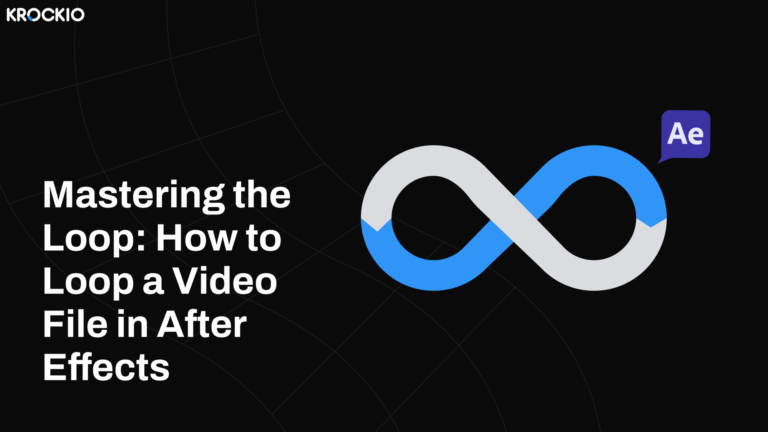What is Prioritization and Why is it Important?
Prioritization is a fundamental skill that plays a crucial role in our productivity, decision-making, and overall well-being. It involves the art of determining the importance and order of tasks, goals, and activities based on their significance and impact. By mastering the skill of prioritization, we gain the ability to focus on what truly matters, make progress toward our objectives, and optimize our use of time and resources.
The importance of prioritization cannot be overstated. Here’s why it matters:
First and foremost, prioritization maximizes our productivity. By consciously deciding where to direct our energy and efforts, we can avoid wasting time on low-value or non-essential tasks. Instead, we invest our resources in activities that yield the greatest results and move us closer to our desired outcomes. This strategic approach enhances our efficiency and effectiveness in tackling our responsibilities.
Moreover, prioritization is key to achieving our goals. By assessing and ordering tasks according to their alignment with our objectives, we ensure that we allocate our time and attention to the most relevant and impactful activities. It enables us to stay focused, make progress, and ultimately reach our desired destinations.
Effective prioritization also plays a vital role in time management. As time is a limited resource, it is crucial to allocate it wisely. By prioritizing tasks, we avoid falling into the trap of procrastination or being overwhelmed by an unending to-do list. We establish a sense of structure and control over our time, allowing us to accomplish what needs to be done while maintaining a healthy work-life balance.
And at the end, prioritization reduces stress. When we have a clear understanding of our priorities, we experience a sense of clarity and purpose. We can focus on one task at a time, avoiding constant worry about what we should be doing. By aligning our efforts with our priorities, we alleviate the pressure and overwhelm that comes from juggling numerous responsibilities without a clear direction.
Finding the perfect balance between work, personal life, and self-care can often feel like a daunting task. With so many demands and responsibilities pulling us in different directions, it’s crucial to develop the skill of effective time allocation. By mastering the art of prioritization, we can optimize our productivity, reduce stress, and achieve our goals with enthusiasm. So, let’s dive into this exciting journey of learning…
How Can We Allocate our Time Wisely?
Recognizing the Importance of Prioritization
When we fail to prioritize, we risk falling victim to the never-ending cycle of busyness. Prioritization empowers us to focus on what truly matters, guiding our actions toward the goals and values that drive us. By recognizing the significance of prioritization, we lay the foundation for a more fulfilling and purpose-driven life.
Assessing Your Responsibilities
Before diving into the world of prioritization, it’s essential to assess our responsibilities and commitments. Start by creating a comprehensive list of tasks, projects, and obligations that require your attention. This exercise will provide clarity and help you understand the scope of your responsibilities.
Differentiating Urgency and Importance
A common mistake many people make is equating urgency with importance. While urgent tasks demand immediate attention, important tasks contribute significantly to our long-term goals and overall success. Learning to differentiate between the two is key to effective prioritization. By focusing on important tasks, we can avoid the trap of constantly putting out fires and instead work towards achieving meaningful results.
Applying the Eisenhower Matrix
The Eisenhower Matrix, a powerful tool for prioritization, helps us categorize tasks based on their urgency and importance. Dividing tasks into four quadrants—urgent and important, important but not urgent, urgent but not important, and neither urgent nor important—allows us to make informed decisions about how to allocate our time effectively. This method ensures that we address both short-term demands and long-term goals.
Embracing the 80/20 Rule
The Pareto Principle, commonly known as the 80/20 rule, states that 80% of our results come from 20% of our efforts. By identifying and focusing on the most impactful tasks, we can maximize our productivity and achieve significant results. Embracing the 80/20 rule encourages us to eliminate or delegate non-essential tasks and invest our energy in activities that generate the most value.
Setting SMART Goals
Effective prioritization requires clear goals. SMART goals—specific, measurable, achievable, relevant, and time-bound—provide a framework for defining and tracking our objectives. By breaking down our goals into smaller, actionable steps, we can stay motivated and make steady progress towards our desired outcomes.
Harnessing the Power of Time Blocking
Time blocking is a technique that involves scheduling specific blocks of time for different activities. By designating dedicated time slots for important tasks, meetings, breaks, and personal activities, we create structure and minimize distractions. Time blocking helps us manage our time proactively, ensuring that we allocate sufficient focus and energy to each aspect of our lives.
Embracing Flexibility and Adaptability
Prioritization is not a rigid system but rather a dynamic process. Circumstances change, new opportunities arise, and unexpected challenges emerge. It’s essential to embrace flexibility and adaptability, allowing us to adjust our priorities accordingly. Being open to change enables us to make the most of our time and seize new opportunities as they arise.

Identifying & Using the Right Tools to Help You with Task Prioritization
To-Do Lists
A classic yet powerful tool, to-do lists provide a straightforward way to jot down tasks and visually track your progress. Whether you prefer pen and paper or digital platforms, creating a to-do list helps you capture and prioritize tasks in a tangible manner. You can organize your list by urgency, importance, or any other criteria that resonate with your prioritization approach.
Eisenhower Matrix
Named after former US President Dwight D. Eisenhower, this matrix helps you categorize tasks based on their urgency and importance. Divided into four quadrants, the matrix allows you to classify tasks as urgent and important, important but not urgent, urgent but not important, or neither urgent nor important. This visual representation helps you focus on high-priority tasks and determine which tasks can be delegated, eliminated, or postponed.
Prioritization Apps
In today’s digital age, there are numerous apps designed specifically for task management and prioritization. Applications like Todoist, Microsoft To-Do, Trello, and Asana offer features such as task organization, due dates, reminders, and collaboration options. These apps often allow you to set priorities, assign deadlines, and track your progress, making them convenient tools for managing your tasks effectively.
Pomodoro Technique
The Pomodoro Technique is a time management method that can aid task prioritization. The technique involves breaking your work into focused intervals, typically 25 minutes, called “Pomodoros,” followed by short breaks. By using a timer or Pomodoro app, you can allocate time blocks to specific tasks and prioritize them based on their importance and the number of Pomodoros required. This approach promotes focus, productivity, and task completion.
Time Tracking Tools
Tracking your time can provide valuable insights into how you spend your day and help you prioritize tasks more effectively. Tools like Toggl, RescueTime, or Clockify enable you to monitor and analyze how much time you allocate to different activities. By identifying patterns and time-consuming tasks, you can adjust your priorities accordingly and allocate more time to essential activities.
Kanban Boards
Kanban boards offer a visual representation of your tasks and their progress. You can move tasks across the board as you work on them, giving you a clear overview of your priorities and progress at a glance.
Mind Mapping
Mind mapping is a creative tool that helps you brainstorm ideas, plan tasks, and visualize relationships between different elements. You can use software like MindMeister or draw a mind map on paper to visually organize your thoughts and tasks. Mind maps can assist in identifying priority areas, subtasks, and dependencies, enabling you to prioritize effectively and create a logical sequence of actions.
Krock.io
Krock.io is not just any project management tool – it’s a cool and innovative platform that brings a fresh perspective to organizing and managing projects. Here are some of the reasons why using Krock.io as a project management tool is a game-changer:
Centralized Task Management: With Krock.io, you have all your tasks in one place. You can create tasks, assign them to team members, set deadlines, and track progress effortlessly. The platform’s intuitive task management system ensures that nothing falls through the cracks, enabling you to stay organized and keep everyone on the same page.
Real-time Progress Tracking: Tracking project progress becomes a breeze with Krock.io. The platform provides real-time updates on task statuses, allowing you to monitor progress effortlessly. You can quickly identify bottlenecks, address any issues, and make informed decisions to keep the project on track. The transparency and visibility offered by Krock.io enhance project oversight and enable efficient resource allocation.
Conclusion
Mastering the art of prioritization is a transformative journey that empowers us to take control of our time and live more purposefully. By recognizing the importance of prioritization, differentiating urgency from importance, utilizing powerful tools like the Eisenhower Matrix and the 80/20 rule, setting SMART goals, harnessing time blocking, and embracing flexibility, we can optimize our productivity and achieve a balanced and fulfilling life.
Remember, effective time allocation is a skill that requires practice and constant refinement, but the rewards are immeasurable. So, embark on this exciting journey and unlock your true potential!
Check out more articles on getting started with KROCKIO:
- The Art of Project Recovery: How to Turn Around Failing Projects
- Storyboard AI – Generate Storyboard Online in a few clicks
If you’re having any trouble or need any help, let us know.









